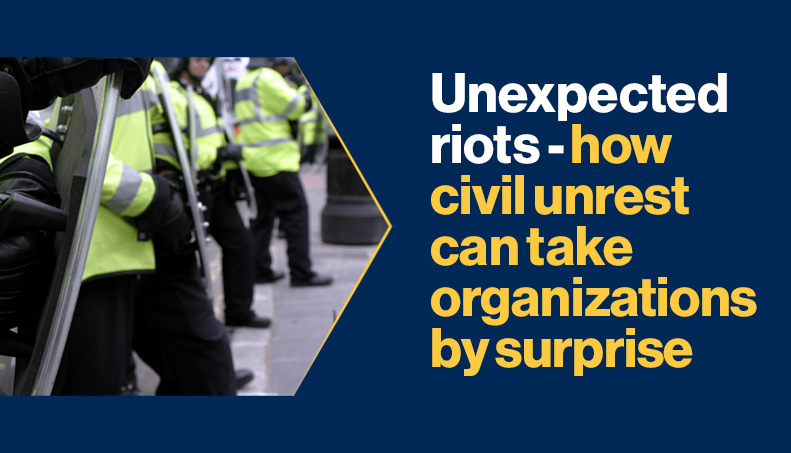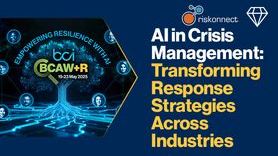Unexpected riots - how civil unrest can take organizations by surprise

After a knife attack in the north of England which resulted in three young girls being killed, riots broke out following misinformation of the identity and background of the suspect on social media. As a result, violent protests occurred in over 20 cities and towns across the UK, often centered around hotels housing asylum seekers, mosques, and businesses owned by ethnic minorities. In response, counter protesters and anti-fascist groups staged protests in areas where far right gatherings were advertised. To date, the Crown Prosecution Service says 494 people have been charged with offences related to the public disorder.[1]
The unexpected and sudden violence caught communities and the UK government off-guard, hitting headlines and testing national response plans. However, civil unrest in the form of violent protest and riots is not an activity confined to the UK; it’s an ever-present global risk. In the past year, riots have affected countries such as France, Gambia, Tunisia. Nepal, Greece, Spain and Argentina, among others, creating fear and disrupting business as usual. Indeed, the BCI Horizon Scan Report 2023 found political violence and unrest was one of the top five concerns for mid-to long-term risks for 7.4% of respondents, and that it was Asia’s second most frequent disruption that year, a trend that shows no sign of stopping. In the past twelve months alone, Asia has experienced large scale riots including the Punjab farmers’ protests and numerous electoral protests across the region.
Civil unrest, riots, and protests can affect global societies in numerous ways. Businesses bear the brunt of physical damage to premises, potentially meaning operations are halted, and adversely affecting their insurance costs – a threat especially pressing on SMEs. Riots can disrupt transportation routes, preventing people from attending work or school, and delaying delivery of resources to factories and shops. Curfews meant to keep the public safe force early closures, with businesses such as bars, restaurants, and entertainment venues disproportionately affected. Personal safety fears are another aspect to riots that can cause business continuity issues, and it’s one that organizations should not underestimate. Staff may not feel safe on work premises even if routes are open, they may have fears over family and friends in affected areas, and, as per the case for ethnic minorities affected by the recent UK riots, personal resilience is adversely impacted.
To counter the risks of civil unrest, organizations should look to ensure their workforce is able to work from home, or a separate location where possible, to protect their safety and wellbeing. Remote working can also alleviate potential reputational damage should staff be forced to attend offices in areas perceived as unsafe. Sourcing alternative supply chains in advance, partnering with top management to highlight the risks of civil conflicts, intelligent social media scanning, and creating a strong PR strategy are all steps that resilience professionals can take in advance.
Although many resilience practitioners have plans to mitigate civil unrest risks surrounding known events, such as election dates, the UK’s recent unexpected violence and Argentina’s violent protests over controversial economic reforms underlines the fact that civil unrest can flare up at any time and cause widespread disruption. Organizations would do well to take note and prepare flexible, incident agnostic plans that counter the symptoms of disruption, even if there are no potential events on the horizon.










































